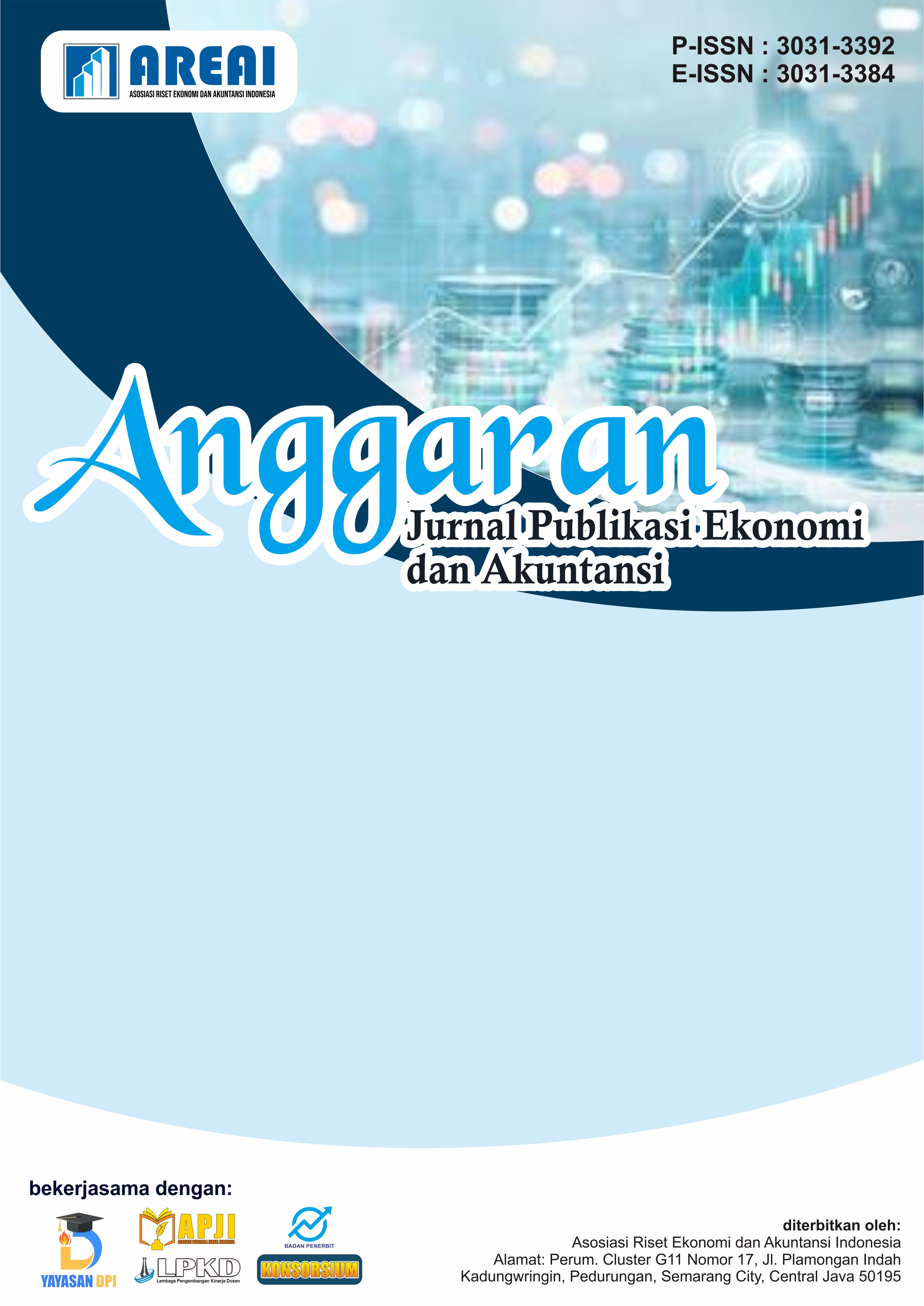Analyzing Some Economic and Environmental Returns of Circular Economy in Italy
DOI:
https://doi.org/10.61132/anggaran.v3i1.1226Keywords:
Social Welfare, Environmental Law, Financial Incentives, Material Footprint, Ronchi DecreeAbstract
The present study targets carrying out an analysis of economic and environmental returns as an effect of the adoption of a circular economy in Italy. Some of the key concepts it focuses on are promotion of private circular investment, export of recyclable material, use of circular material, eco-innovation, material footprint, and contribution of renewable energy to the total energy. The present study is supported by the systematic analysis of international data related to the role of circular economy in increasing economic efficiency and reducing environmental costs. The results highlight that private circular investment is highly relevant for the creation of new opportunities for economic development and supporting new, innovative sectors, such as recycling technologies. The results also underlined that eco-innovation plays a crucial role in improving resource efficiency, material footprint reduction, and renewable energy. The study confirms that the circular economy can be a strategic opportunity for Italy to further contribute to renewable energy and to reduce its imported natural resources dependence in a way that is both sustainable and economically competitive. The present study provides valuable insights for decision-makers and policymakers to promote circular economy strategies at national and international levels.
Downloads
References
Agovino, M., Cerciello, M., Garofalo, A., & Musella, G. (2024). Environmental legislation and achieving circular economy in Italy’s waste sector: A shift-and-share macro-area analysis. Utilities Policy, 90, 101811.
Agovino, M., Cerciello, M., Javed, A., & Rapposelli, A. (2023). Environmental legislation and waste management efficiency in Italian regions in view of circular economy goals. Utilities Policy, 85, 101675.
Arcuri, A., Tienhaara, K., & Pellegrini, L. (2024). Investment law v. supply-side climate policies: Insights from Rockhopper v. Italy and Lone Pine v. Canada. International Environmental Agreements: Politics, Law and Economics, 24(1), 193–216.
Bertossi, P., Kaulard, A., & Massarutto, A. (2000). Municipal waste management in Italy. In Municipal Waste Management in Europe: A Comparative Study in Building Regimes (pp. 121–169). Springer.
Cdp. (2023). Sectoral strategic guidelines for the circular economy. Italy.
Constantinescu, A., Platon, V., Surugiu, M., Frone, S., Antonescu, D., & Mazilescu, R. (2022). The influence of eco-investment on e-waste recycling—Evidence from EU countries. Frontiers in Environmental Science, 10, 928955.
D’Adamo, I., Favari, D., Gastaldi, M., & Kirchherr, J. (2024). Towards circular economy indicators: Evidence from the European Union. Waste Management & Research, 0734242X241237171.
Esposito, L., & Romagnoli, G. (2023). Overview of policy and market dynamics for the deployment of renewable energy sources in Italy: Current status and future prospects. Heliyon, 9(7).
Friant, M. C., Vermeulen, W. J. V., & Salomone, R. (2021). Analysing European Union circular economy policies: Words versus actions. Sustainable Production and Consumption, 27, 337–353.
Gasser, M., Pezzutto, S., Sparber, W., & Wilczynski, E. (2022). Public research and development funding for renewable energy technologies in Europe: A cross-country analysis. Sustainability, 14(9), 5557.
Geissdoerfer, M., Savaget, P., Bocken, N. M. P., & Hultink, E. J. (2017). The circular economy–A new sustainability paradigm? Journal of Cleaner Production, 143, 757–768.
Ghisellini, P., & Ulgiati, S. (2020). Circular economy transition in Italy: Achievements, perspectives, and constraints. Journal of Cleaner Production, 243, 118360.
Hailemariam, A., & Erdiaw‐Kwasie, M. O. (2023). Towards a circular economy: Implications for emission reduction and environmental sustainability. Business Strategy and the Environment, 32(4), 1951–1965.
Hysa, E., Kruja, A., Rehman, N. U., & Laurenti, R. (2020). Circular economy innovation and environmental sustainability impact on economic growth: An integrated model for sustainable development. Sustainability, 12(12), 4831.
Jawahir, I. S., & Bradley, R. (2016). Technological elements of circular economy and the principles of 6R-based closed-loop material flow in sustainable manufacturing. Procedia CIRP, 40, 103–108.
Kirchherr, J., Reike, D., & Hekkert, M. (2017). Conceptualizing the circular economy: An analysis of 114 definitions. Resources, Conservation and Recycling, 127, 221–232.
Korhonen, J., Honkasalo, A., & Seppälä, J. (2018). Circular economy: The concept and its limitations. Ecological Economics, 143, 37–46.
Lombardia, Unioncamere. (2022). Bando innovazione delle filiere di economia circolare 2022. Retrieved from https://www.unioncamerelombardia.it/bandi-e-incentivi-alle-imprese/dettaglio-bando/bandoinnovazione-%0Adelle-filiere-di-economia-circolare-2022
Maldonado-Guzmán, G., Garza-Reyes, J. A., & Pinzón-Castro, Y. (2021). Eco-innovation and the circular economy in the automotive industry. Benchmarking: An International Journal, 28(2), 621–635.
Maxime, D., Grilli, M., Marsitzky, D., Meiser, W., Ménière, Y., & Rudyk, I., et al. (2021). Europe and US are leading innovation in plastic recycling and alternative plastics globally, patent data shows. Munich, Germany.
Downloads
Published
How to Cite
Issue
Section
License
Copyright (c) 2025 Anggaran : Jurnal Publikasi Ekonomi dan Akuntansi

This work is licensed under a Creative Commons Attribution-ShareAlike 4.0 International License.






